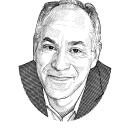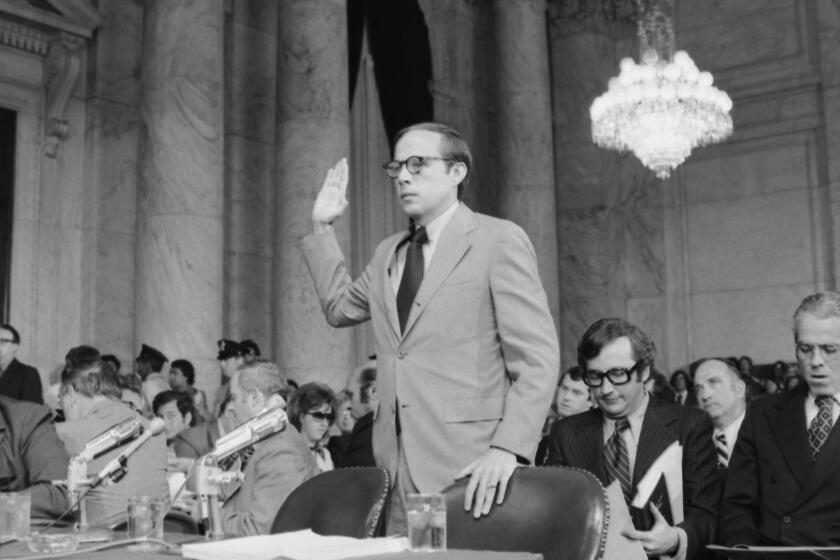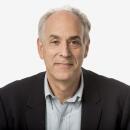Column: What I learned about myself at the Richard M. Nixon museum

- Share via
In the house where I grew up, President Nixon was a villain. My parents voted against him every opportunity they got, and we all cheered when he resigned during his second term, flying off in ignominy from the White House lawn to a life outside the public eye.
That he was a criminal, a warmonger, a bigot, a vicious redbaiter, a threat to the Constitution — these were unquestionable truths.
So for me, a recent visit to the Richard M. Nixon Presidential Library and Museum in Yorba Linda was a head-turning, mind-bending experience that challenged my assumptions and forced me to test my long-hardened opinions against a very different narrative.
Some people don’t like having their assumptions challenged. I decided to embrace it.
Opinion Columnist
Nicholas Goldberg
Nicholas Goldberg served 11 years as editor of the editorial page and is a former editor of the Op-Ed page and Sunday Opinion section.
I didn’t go to the museum because of this month’s historic anniversaries. But for the record, January 2023 marks the 50th anniversary of the Paris Peace Accords that led Nixon to withdraw American troops from Vietnam, and the 50th anniversary of the trial of the Watergate burglars before U.S. District Court Judge John J. Sirica.
Vietnam and Watergate were central issues of my political formation. I was young in the Nixon years — only 16 when he resigned in 1974 — but I marched against the war and followed the Watergate hearings on television, with appropriate revulsion.
At the museum, I knew I’d be entering an alternate universe. One in which the same facts are presented but somehow seem different, where the story has subtly shifted so you’re caught off guard and forced to scramble to find the truth. Like watching Fox News after years in front of MSNBC.
The Nixon presented by the museum is one who needs to be judged “on nothing less than his entire life and career,” as President Clinton put it at Nixon’s funeral in 1994. The museum’s Nixon is not innocent or blameless, yet the portrait painted is fundamentally warm, admiring and forgiving.
This Nixon is complex, a man of vision, a tragic hero brought down by his own flaws.
I wandered through the exhibits, learning about his days in the Navy, and about his courtship of his future wife, Pat. He seemed downright human. But I couldn’t help wondering: Was I being played?
A new CNN documentary is the former Nixon White House counsel’s first on-camera look-back at the event that resonates today.
Surely they were right about Nixon’s successes: He made an extraordinary, historic visit to China in 1972 that laid the groundwork for normalized relations between the U.S. and that country after more than 25 years. It was so unexpected and transformative that it spawned a metaphor: the “Nixon-to-China moment.”
Later that year he met in Moscow with Soviet leader Leonid Brezhnev, setting the stage for arms control agreements and a new era of detente in the midst of the Cold War.
Remarkably, it was Nixon — a Republican — who created the Environmental Protection Agency and signed the Endangered Species Act. He signed the Occupational Safety and Health Administration into existence.
Frankly, it is difficult to imagine Republicans today working across the aisle on such important projects.
And given today’s vituperative, self-destructive politics, it’s hard not to be swayed by his words at his first inauguration: “We cannot learn from one another until we stop shouting at one another.” God knows President Trump never said anything so thoughtful.
But each step I took through the museum was a process of confronting and testing my own beliefs and prejudices, pitting the facts as I understood them against those being presented.
Editor’s note: Activist and politician Tom Hayden has died in Santa Monica at the age of 76.
Yes, Nixon inherited the Vietnam War from his Democratic predecessors — and eventually ended it. But he also bombed urban areas, mined harbors and presided over a cross-border troop incursion into Cambodia. It shouldn’t have taken him five years to end the war.
Nixon was recorded on the famous White House tapes saying Washington “is full of Jews,” and “most Jews are disloyal” and “you can’t trust the bastards.” But if those recordings were mentioned at the museum, I missed them. Instead, in the exhibit on the tapes, I was able to listen to him congratulating the Pittsburgh Pirates on their 1971 World Series victory.
I couldn’t help but think about Nixon’s cheerleading role in the McCarthy era — a period of blacklists, loyalty oaths, the naming of names and the persecution of people for their political beliefs.
What about the Republicans’ cynical “Southern strategy” to win over white voters in the South using coded language to play on racial fears?
And finally, Watergate. In the run-up to the 1972 campaign, Nixon’s cronies burgled the office of Daniel Ellsberg’s psychiatrist, broke into Democratic National Committee headquarters at the Watergate Hotel, engaged in “dirty tricks” and campaign finance abuses. They targeted political enemies, including weaponizing the IRS against adversaries.
The museum, to its credit, had a relatively thorough exhibit on that mind-boggling scandal and the president’s disgraceful role in the cover-up.
The Richard Nixon Presidential Library has not had a full-time director since I left the position in November 2011.
In the end I didn’t find my core beliefs upended or my view of the world shattered. Nixon is still a villain in my mind. But I came away with a more nuanced view and a better understanding of how others might see the man differently. I could recognize his successes. And I was served a well-needed reminder that people (even those as polarizing as Nixon) are rarely entirely good or bad.
Which brings me back to my main point, which is not to pick a fight about Nixon’s failures and virtues.
My point is that, for me at least, it is important to remain open to argument, to challenge my own preconceptions and to listen to alternative views with an open mind. Sometimes it helps me ratify what I already believe. Sometimes it doesn’t. I usually enjoy it, but sometimes it’s disconcerting.
But of this I’m sure: Talking only to people within our bubbles, allowing ourselves to be governed by polarization, siloization, demonization and confirmation bias — that’s intellectually lazy.
Hate Nixon by all means, if that’s where the facts lead you. Or don’t, if you think his accomplishments are commensurate with his failures. But hear each other out.
More to Read
A cure for the common opinion
Get thought-provoking perspectives with our weekly newsletter.
You may occasionally receive promotional content from the Los Angeles Times.













